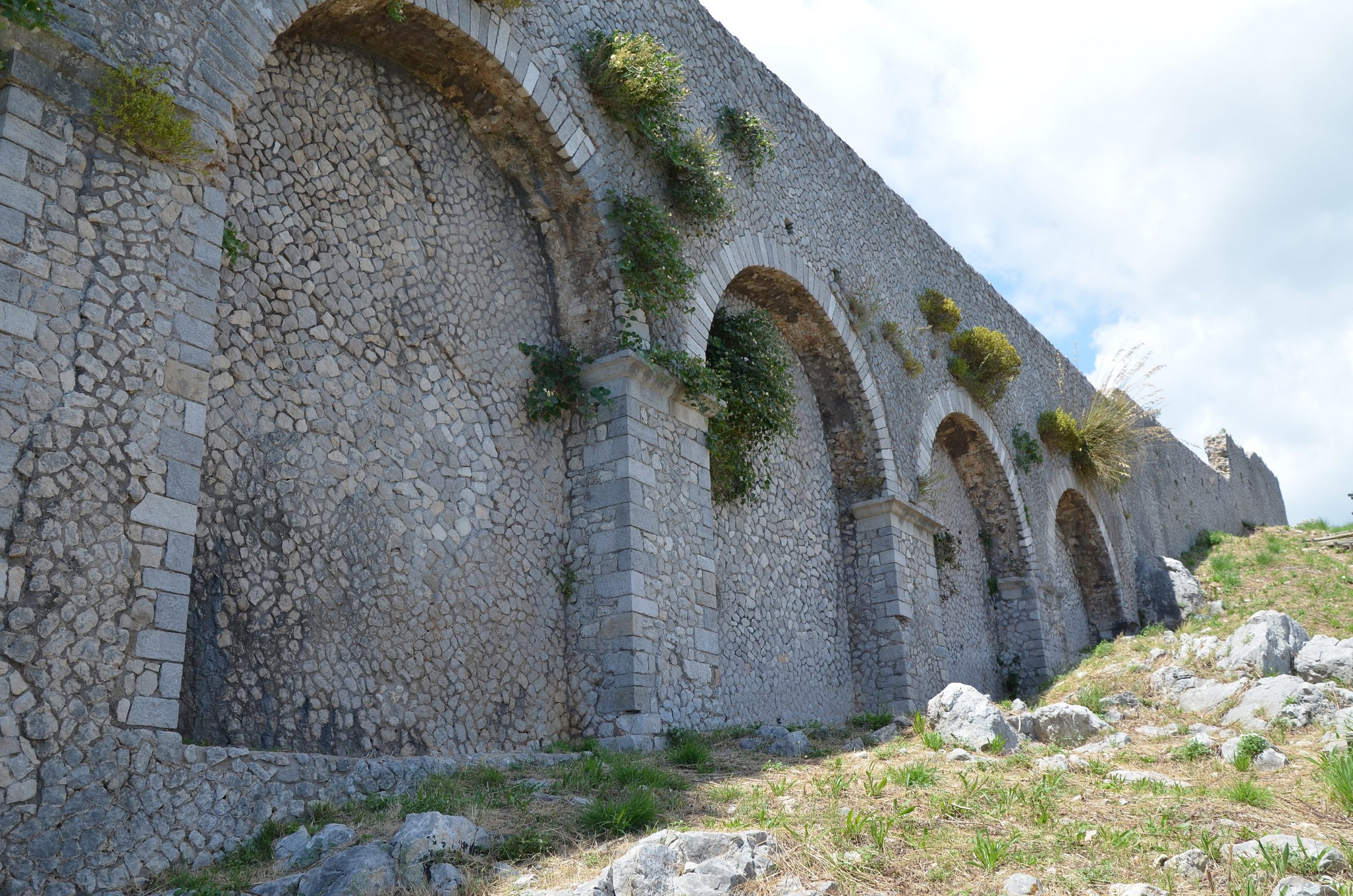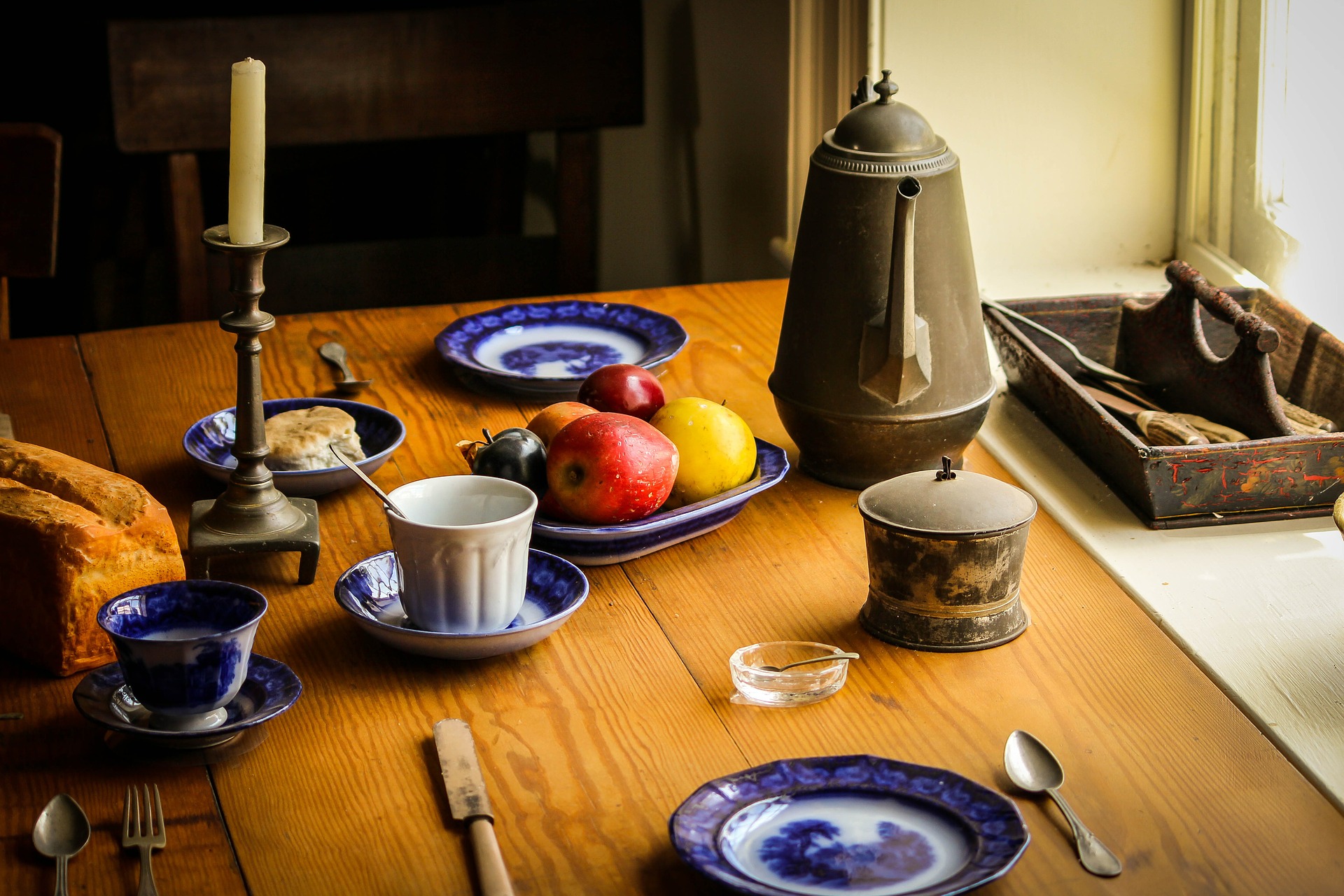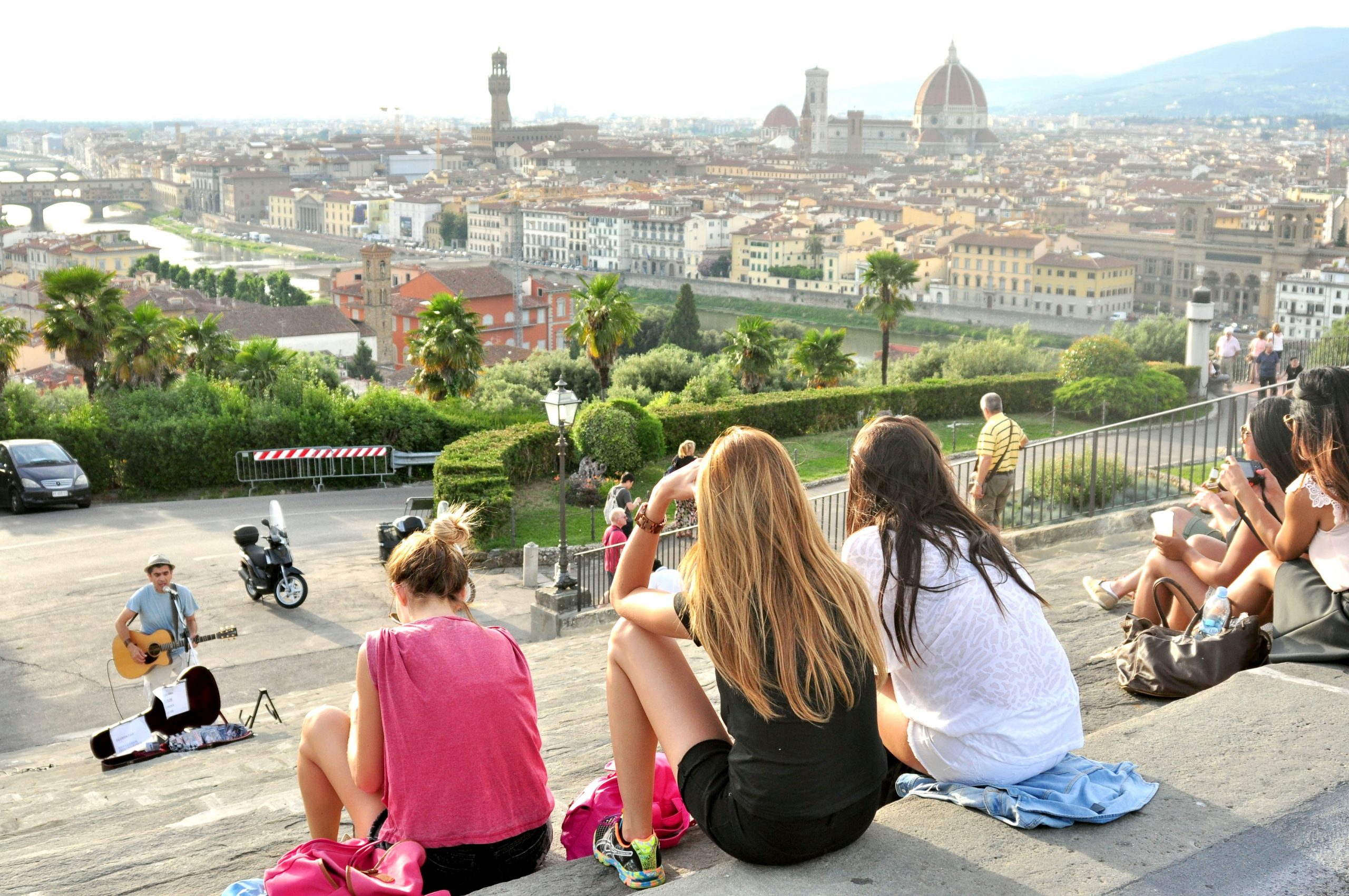We stood transfixed at the Temple of Jupiter Anxur on Mount St. Angelo. I had previously gazed up at the temple from below and noticed the large terraced platform with a long row of support arches running underneath. It was then that my thoughts recalled a Bible verse I once read about putting your light on a hill for all to see. This was certainly a place to display ones most highly prized possession. Its beauty and importance could be seen by everyone for miles around.
Terracina is located 47 miles southeast of Rome on the Tyrrhenian coastline. My blog tour group, This Is Your Time, had just arrived at the Temple of Jupiter Anxur with Danilo Mastracco from Slow Food Terracina, and Laura Marano from Terracina Live, the local newspaper. We entered through the ticket office which is run by the organization Munus. This association also manages the Tempio di Giove by working to support the communications and promotional aspect of the site.
The Roman Sanctuary, a large complex of several buildings, dates back to the 4th century B.C., although most of the development is believed to have happened over a period of time up to the 1st century. The spectacular position of the large temple mounted high on the terrace, accessed by twelve steps, would have dominated the skyline . Although now merely foundations, a vaulted gallery and a cryptoportico, it is still commanding.
The Temple of Jupiter Anxur is mentioned by Livy, Virgil and Servius. Livy records lightning striking the temple twice. A passage in Virgil’s writings indicate that the worship of Jupiter Anxur extended to neighboring towns and that the Temple complex was highly visible all around. Servius wrote that the infant Jupiter was worshipped under the title of Anxur.
The vaulting at the base of the temple area are the most impressive remains of the complex. Below is how they look today.
During the first century it was also used for military purposes. At the decline of the Roman empire in the 5th century, the site caught fire and burned. Afterward, a Benedictine monastery was built in its place. It was later abandoned in the 16th century. The arches of the subterranean support system are regarded as one of the best examples of “opus incertum,” which was a Roman construction technique using concrete. As I walked through them, I was very impressed by the strength and precision of the structure. The Roman complex was built to last.
Twelve arches give the impression of a single corridor. The figure at the end below increases the effect of one single line of arches. The construction of the rock and brick walls was fascinating. It all fit tightly together like a puzzle.
In the past, a cave connected with the oracle’s rock podium, which had a hole that winds passed through and made eerie sounds. Because of this, the cave was chosen as a holy site associated with the god Jupiter’s voice. A priest stood in the cave and gave answers to the questions of the devoted by deciphering the voice of Jupiter.
The word Anxur is a Volscian name for Jupiter as a youth. The Volsci were an early Italic tribe that lived in the hills and marshes of the area. Although they fought against the Romans, they eventually succumbed to domination.
Mount St. Angelo, at 227 m high, stood directly in the way of Rome’s most important road. The Via Appia, built in 312 BC as a major road between Rome and Capua, ran up the steep slope of the mountain. It was Trajan who had the rock face cut below the complex along the coast to enable travel at sea level. The completed bypass was not finished until the early 2nd century AD.
The area of the complex is grassy and inviting for an outdoor lunch. There is no charge to enter from the generous sized parking lot. A small bar (cafe pictured above) sits inside the walls on the sun-splashed terrace with outdoor dining tables where you can also purchase a guidebook. Cats lounge about soaking up the warmth of the stonework.
For those more energetic, walk up to the temple complex from Piazza del Municipio in Terracina and soak in the flower strewn olive groves along the way.































